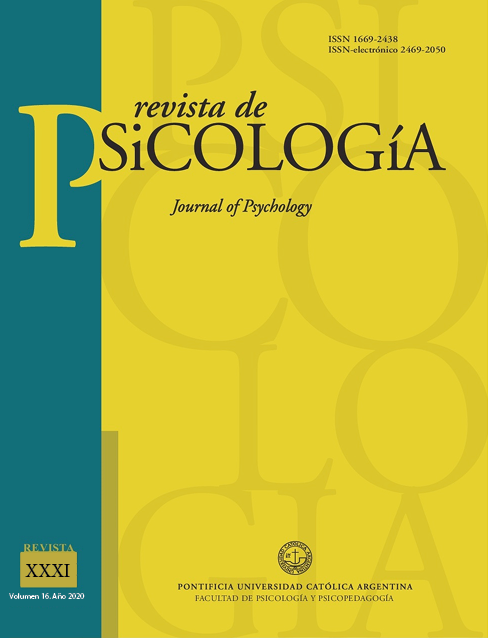So You Think You Can Jump? Perception of Self and Others’ Maximum Jumping Capabilities
Keywords:
Action understanding, Affordances, Perception-ActionAbstract
The success of our interactions with others depends on cognitive abilities, such as the abilities to perceive, anticipate, and understand other people’s actions (Ramenzoni, Riley, Shockley, and Davis, 2008). However, personality traits often times dictate a person’s success and expected reward in social contexts. Two experiments investigated people’s ability to estimate both their own and other people’s jumping capability and how estimates changed depending on people’s levels of social anxiety. Estimates were obtained for an horizontal jumping extent using the method of limits and participants’ social anxiety level was assessed using two surveys: the Social Interaction Self-Statement Test (SISST; a self-report scale that assesses social anxiety) and the Brief Social Phobia Scale (BSPS; assesses fear or avoidance of various social phobia situations) (Davidson et al., 1991). Experiment 1 showed that participants could accurately estimate the maximum extent they can jump, that their estimations were more accurate from the fixed compared to the preferred starting location, and that participant’s estimations were not affected by their level of social anxiety. Experiment 2 extended the findings of Experiment 1 by asking participants to provide estimations for a female and a male model in addition to themselves. Results showed that participants viewed estimating for themselves and estimating for other people as similar perception tasks, however only estimations provided for other people were related with the perceiver’s social anxiety. In addition, results showed that participants underestimated both the male and female model’s jumping ability, but they underestimated significantly more the male than the female model. Though, the ratios did not vary in accuracy depending on the perceiver’s gender, the participants’ estimations were correlated with the perceiver’s level of social anxiety, such that people exhibiting higher levels of social anxiety estimated that the male and female models could do less than did participants scoring low on the social anxiety measures. This is the first study to explore how we perceive affordances for other people within a social context. It found a weak correlation between social anxiety and how we perceive what other’s can do towards us. It remains for future studies to explore whether this effect is amplified by changes in state anxiety and whether they generalize to the perception of other action-scaled affordances, especially those that would not encroach on the perceiver’s personal space. Overall, the results obtained here open a promising new avenue for the investigation of how our social make-up shapes our perception of the world around us and the people we interact within it.
Downloads
References
Chemero, A., Klein, C., and Cordeiro, W. (2003). Events as changes in the layout of affordances. Ecological Psychology, 15 (1), 19-28.
Cornus, S., Montagne, G., and Laurent, M. (1999). Perception of a stepping-across affordance. Ecological Psychology, 11 (4), 249-267.
Fajen, B. R. (2005). The scaling of information to action in visually guided braking. Journal of Experimental Psychology: Human Perception and Performance, 31 (5), 1107-1123.
Lynn, M., & McCall, M., (2000). Gratitude and gratuity: a meta-analysis of research on the service-tipping relationship, Journal of Socio-Economics, 29, 203-214.
Mark, L. S. (1987). Eyeheight-scaled information about affordances: A study of sitting and stair climbing. Journal of Experimental Psychology: Human Perception and Performance, 13 (3), 361-370.
Mark, L. S., Jiang, Y., King, S. S., and Paasche, J. (1999). The impact of visual exploration on judgments of whether a gap is crossable. Journal of Experimental Psychology: Human Perception and Performance, 25 (1), 287-295.
Marsh, K. L., Johnston, L., Richardson, M. J., and Schmidt, R. C. (2009). Toward a radically embodied, embedded social psychology. European Journal of Science and Social Psychology: 39 (7), 1217-1225.
Montagne, G., Cornus, S., Glize, D., Quaine, F., and Laurent, M. (2000). A perception-action coupling type of control in long jumping. Journal of Motor Behavior, 32 (1), 37-43.
Oudejans, R. R. D., Michaels, C. F., van Doort, B., and Frissen, E. J. P. (1996). To cross or not to cross: The effect of locomotion on street-crossing behavior. Ecological Psychology, 8 (3), 259-267.
Pepping, G. J. and Li, F. X. (2008). The role of haptic exploration of ground surface information in perception of overhead reachability. Journal of Motor Behavior: 40 (6), 491-498.
Pijpers, J. R., Oudejans, R. D., Bakker, F. C., and Beek, P. J. (2006). The role of anxiety in perceiving and realizing affordances. Ecological Psychology, 18 (3), 131-161.
Proffitt, D. R., Stefanucci, J., Banton, T., and Epstein, W. (2003). The role of effort in perceiving distance. Psychological Science, 14 (2), 106-112.
Ramenzoni, V., Riley, M. A., Davis, T., Shockley, K., and Armstrong, R. (2008). Tuning in to another person's action capabilities: Perceiving maximal jumping-reach height from walking kinematics. Journal of Experimental Psychology: Human Perception and Performance: 34 (4), 919-928.
Stefanucci, J. K., Proffitt, D. R., Banton, T., and Epstein, W. (2005). Distances appear different on hills. Perception & Psychophysics, 67 (6), 1052-1060.
Warren, W. H., Jr. (1984). Perceiving affordances: Visual guidance of stair climbing. Journal of Experimental Psychology: Human Perception and Performance, 10 (5), 683-703.
Warren, W. H., Jr. and Whang, S. (1987). Visual guidance of walking through apertures: Body-scaled information for affordances. Journal of Experimental Psychology: Human Perception and Performance, 13 (3), 371-383.
Witt, J. K., Proffitt, D. R., and Epstein, W. (2005). Tool use affects perceived distance, but only when you intend to use it. Journal of Experimental Psychology: Human Perception and Performance, 31 (5), 880-888.
Witt, J. K., Linkenauger, S. A., Bakdash, J. Z., & Proffitt, D. R. (2008). Putting to a bigger hole: Golf performance relates to perceived size. Psychonomic Bulletin and Review, 15, 581-585.
Witt, J.K., & Proffitt, D.R. (2005). See the ball, hit the ball: Apparent ball size is correlated with batting average. Psychological Science, 16, 937-938.
Downloads
Published
How to Cite
Issue
Section
License















